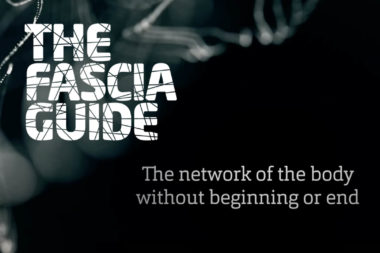

Guimberteau – The world under our skin
Surgeon Jean Claude Guimberteau has spent 15 years conducting over 1,200 examinations of Fascia, which he filmed with an endoscope in vivo (in a living subject) during surgical procedures on humans. He has studied the body’s architecture and the relationship between cells and the body’s fiber network. The endoscope’s journey in a living human shows that the connective tissue, Fascia, the extracellular matrix, is irregular, movable, and fractal. The extracellular world exists and cannot be summarized in any simplified drawings. It becomes an erroneous image!
The body has basic physical characteristics, with several different forces, such as electrical potentials, different pressures such as osmotic pressure, resisting gravity, etc. Everything in the body has a basic tension. When the skin is opened, and the endoscope is inserted, a transparent, wet-glistening tissue appears that has been completely neglected for centuries, what we now call Fascia. With the help of the endoscope, in living tissue, a chaos of irregular, movable fibers and a flow of water bound to so-called glucosaminoglycans, including hyaluronic acid, appears.
One of the first things that one encounters as the endoscope passes under the skin in this world of fibers is adipose tissue or fat tissue. There is no border or free surface between the dermis and subcutaneous tissue. Everything is in total continuity. Adipocytes or fat cells build up adipose tissue with a varied multitude, all with different shapes and varying colors. The fiber network is everywhere, and the fibers penetrate the adipose tissue, being involved in creating the adipose tissue’s shape.
As the endoscope continues past the subcutaneous tissue and adipose tissue, the fiber network continues to spread out, with fibers moving and sliding among each other. Some areas consist solely of fibers and lack cells or have only a few. Cells are not solely responsible for building up the body’s form. They are a part of the body but are not present everywhere, while the fiber network is present everywhere. It is present inside and between all organs, such as muscles, bones, and lungs, and all cells are connected to the fiber network. Since it spreads throughout the body, it must serve an important function!
The fibers not only allow movement but also absorb forces, providing cushioning. They do not move linearly with each other; some fibers slide over others, some fibers split, and some lead to each other. By dividing into two or three subfibrils, the force is distributed and energy is dispersed. As they absorb forces, it can move in one place while being still next to it. The fibers are stretchable; they can elongate and then return to their original position, thanks to the rings of elastic elastin inside the fibers. In this way, the fiber network can react to all types of mechanical influences and still maintain its shape, thanks to the dynamic connection between the fibrils. Guimberteau calls this dynamic fractalization.
The fiber network not only affects the outer shape of the cell but also its interior and affects its metabolism through the cytoskeleton. The cells are connected to the fiber network and are constantly influenced by the movement and tension of the fiber network. Therefore, cells and the extracellular matrix are closely linked, there are no free surfaces, no boundaries, everything is completely continuous. An anatomical global coherence.

























